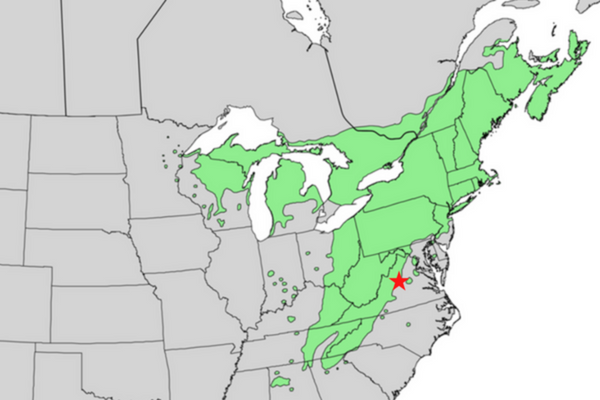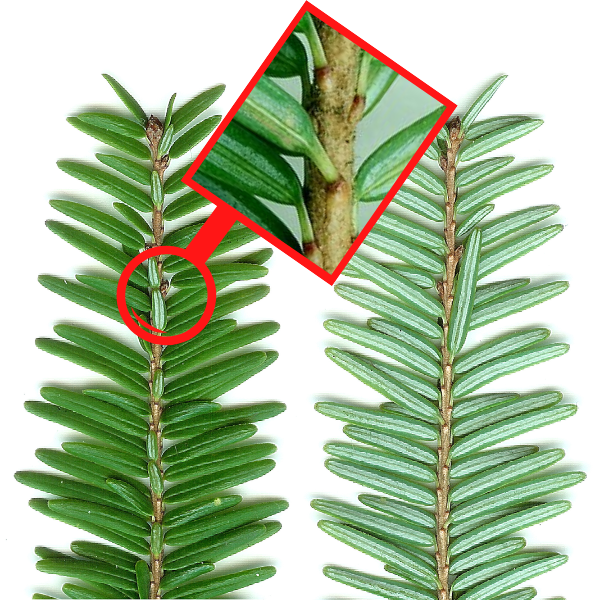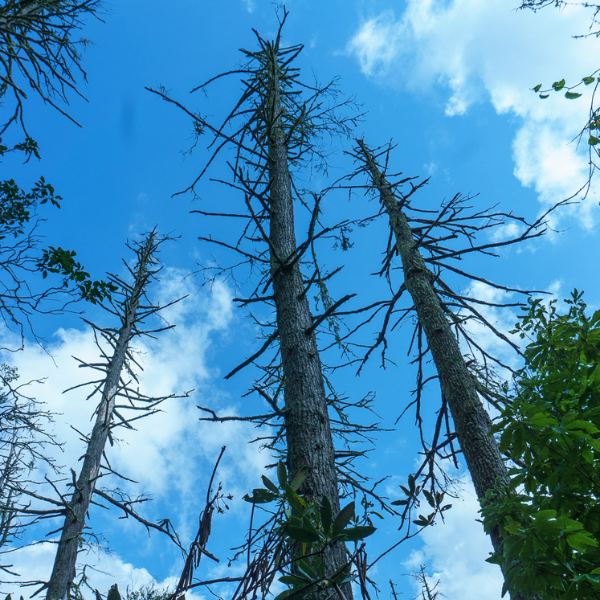Invasive species are defined as any insect, animal, plant or pathogen (e.g., a fungus), that cause serious harm to our environment, society and economy. Take for example the emerald ash borer (EAB), an invasive beetle that has killed up to 99% of ash trees. The past two decades have set us face-to-face with its consequences: the loss of mature trees that provide shade, reduce pollution and increase property value; the loss of wildlife habitat; and the huge cost of removal and replacement.
Like EAB, the hemlock woolly adelgid (Adelges tsugaeis), or HWA, is an invasive insect native to Asia. It was first reported south of the Canadian border in the 1950s but has since moved northward through wind, birds and human activity, establishing several small populations in the Niagara Region and another near Coburg. As its name suggests, the HWA attacks and kills a single tree species: the hemlock. In Ontario and eastern Canada, the Canadian (or eastern) hemlock (Tsuga canadensis) is the only native species at risk.

How to Identify HWA
HWA is quite tiny, often requiring a lens to see, which can make identification tricky. The sap-sucking insect is only about the size of a grain of ground black pepper. As such, the most visible sign of HWA is the presence of its white woolly egg sacs.

Some other signs of HWA are:
- Discoloured needles. Healthy needles are dark green above and paler underneath. Affected needles can appear greyish-green.
- Death of new needle growth. New needle growth is light green and appears at the end of twigs in the spring.

How HWA Damages Hemlocks
HWA has a complex life cycle. Over the course of a year, two separate HWA generations are born on a tree and mature into adults. The first generation takes nine months to mature (June to March) and the second takes three months (March to June). In addition, all HWA are female, which means they reproduce asexually, so it only takes one HWA to start an infestation. In a year, a single female can be responsible for thousands of offspring!

After hatching, HWA moves to the base of a hemlock needle where it attaches itself for the remainder of its life, sucking nutrients from the tree as it develops into an adult. Over the course of four to 15 years, hemlocks infested with HWA will die from starvation as feeding kills needles required for photosynthesis (aka a tree’s food-making process).
Canadian hemlock is a vital tree species providing habitat for many native birds and regulating riparian (riverbank) areas. In urban spaces, hemlocks add aesthetic value, provide shade and increase property value. The loss of our majestic hemlock trees would have considerable environmental and social impacts for our urban forest and beyond.

Four Ways to Manage the Spread of HWA:
- Do not hang bird feeders near hemlocks. Birds are a known transporter of HWA.
- Do not move firewood. Buy and burn wood locally.
- Do buy and plant hemlock trees locally. Inspect them for white woolly egg sacs before planting.
- Do not create stress for existing hemlocks. Boost resilience by providing regular care.
What to do if you think a hemlock has HWA? Simple – report it! You can report suspected HWA to: the Canadian Food Inspection Agency (CFIA); the Invasive Species Hotline at 1-800-563-7711; or the EDDMapS app or website.
Remember, there are other insects that may look like HWA (e.g., spittle bugs, spider egg sacs, etc.), so be sure to review the CFIA’s HWA fact sheet in detail before reporting! For more information on HWA, please visit the Government of Canada’s website.
Jess Wilkin is the Residential Planting Programs Operations Supervisor and an ISA certified arborist at LEAF.
LEAF offers a subsidized Backyard Tree Planting Program for private property. The program is supported by the City of Toronto, the Regional Municipality of York, the City of Markham, the Town of Newmarket, the Regional Municipality of Durham, the Town of Ajax, the Township of Brock, the Municipality of Clarington, the City of Oshawa, the City of Pickering, the Township of Scugog, the Town of Whitby, Ontario Power Generation and Ontario Trillium Foundation.
